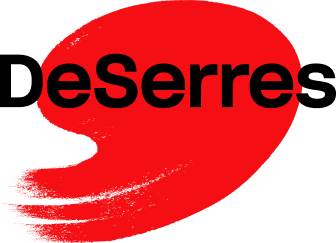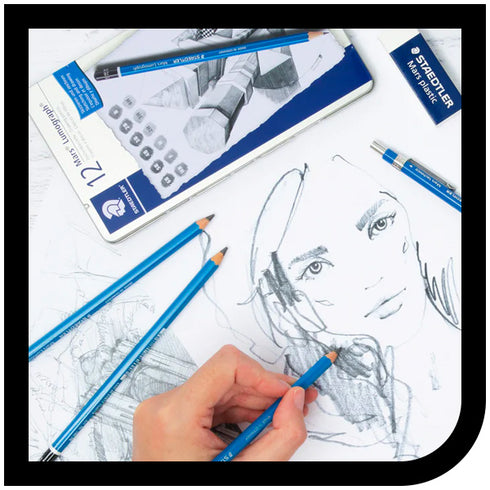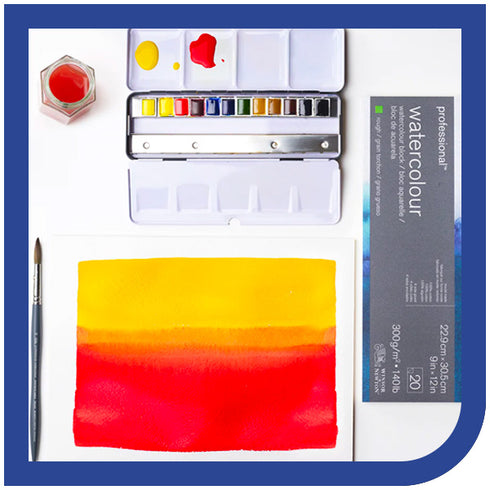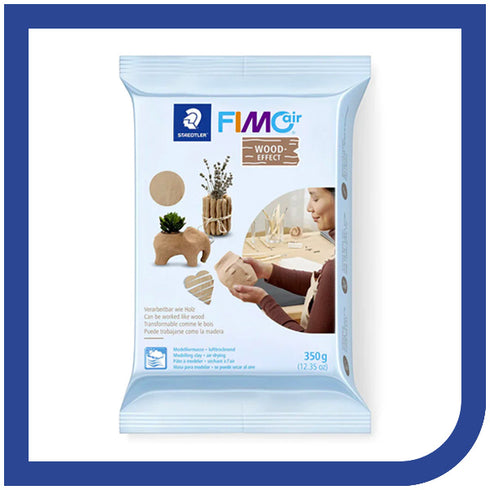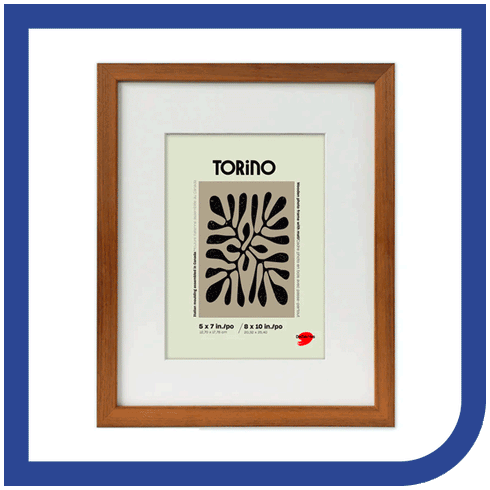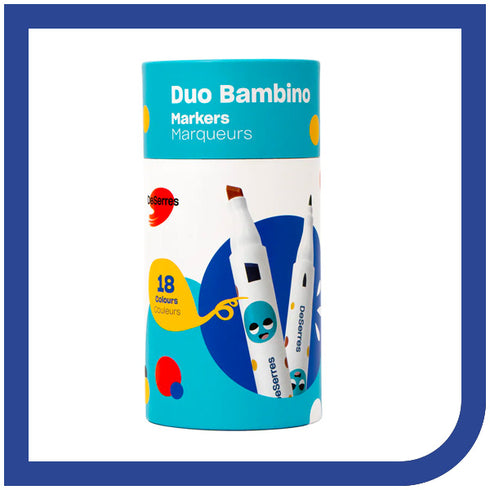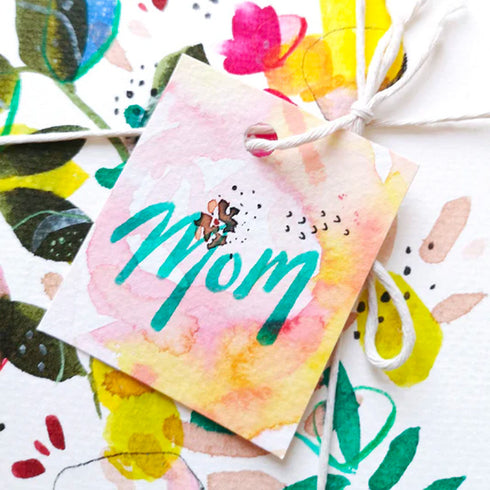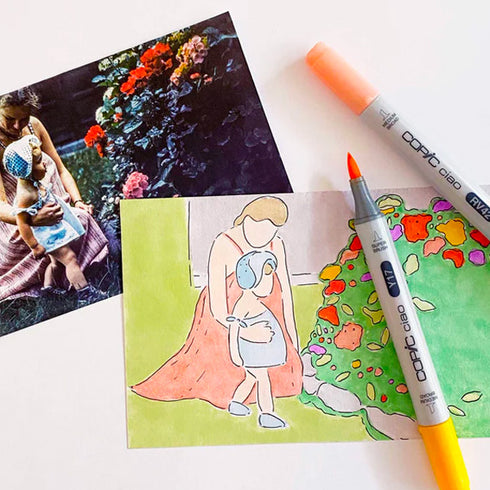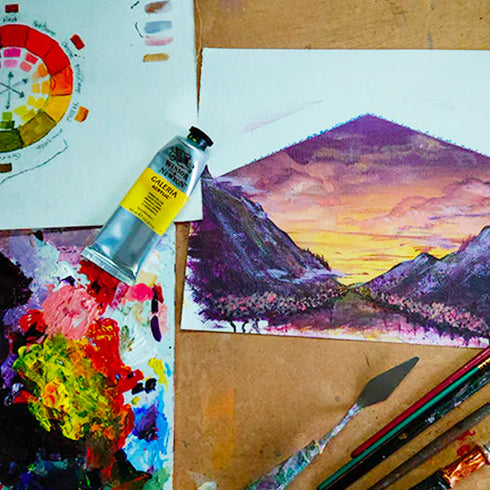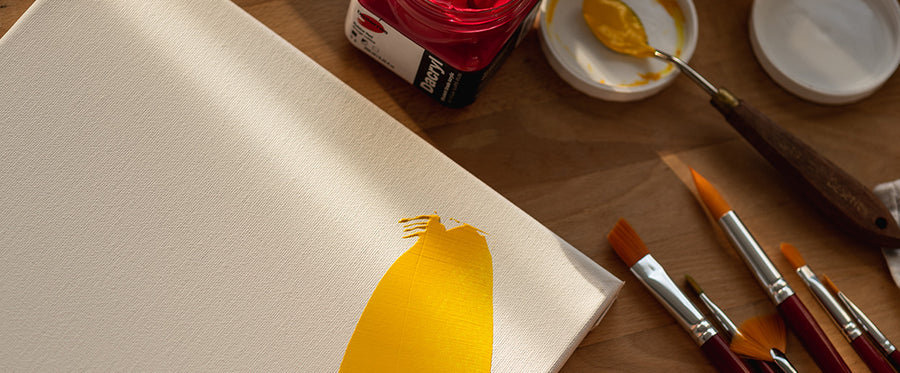What are the differences between paper types? What information is important when choosing a paper? What does the weight mean? Which paper for which medium? Richard Cameron Morneau demystifies paper for you by testing different types.
WATERCOLOUR PAPER
A blend of cotton and paper fibres, watercolour paper stands out because of its resistance to humidity: it can absorb water and thus accommodate wet mediums (it could therefore also be used with gouache).
For a watercolour pad, various types of information allow us to understand the paper composition:
- Weight: Watercolour paper is categorised in grams per square metre. The higher the number, the heavier and thicker the paper is, and the more it can absorb wet mediums without warping. If the weight is less than 300 g, the (thinner) paper may become grainy while you’re creating.
- Dimensions: in inches or centimetres, they can also appear as European measurements (A3, A4, etc.).
- Quantity: number of sheets in the pad.
- Manufacturing information, including “acid-free”: means that over time, the paper will not yellow. Acid-free paper is recommended to ensure that artwork will last over time.
- Paper grain (texture) is generally identified using several distinct pressure-based categories, including:
- Fine grain (cold pressed): captures pigments well, absorbs a large amount of water and is very durable, can be used for washes and with liquid frisket.
- Satin grain (hot pressed): very smooth, also called satin paper, recommended for details and light washes.
- Preservation: if you can apply a protective varnish, check the bottle to see if it’s compatible with wet mediums. If it is, apply a small amount and let it dry between coats.
Watercolour papers Richard explored:
- Richard’s favourite: Fabriano Watercolour Pad
By wetting an area and letting the pigment flow, you can see that this paper has a nice absorption capacity. It’s also suitable for precision work.
- Canson XL Watercolour Pad
On this very smooth, fine-grained paper, the pigment flows faster. It’s great for precision work. Because it’s so thin, it may warp a bit more.

- Arches Cold Pressed, Rough and Hot Pressed Watercolour Paper Pads
Professional quality Arches paper is more expensive. It’s available in rough, hot pressed and cold pressed textures.
- Arches Cold Pressed
On the packaging, you will find additional information on composition: 100% cotton. This paper can absorb more water and is therefore great for the wet-on-wet technique, without risk of warping. 
- Arches Rough Paper
If using the coarsest grain, this paper allows for great precision work (if working on dry paper). If you wet the paper, the pigment will flow randomly through its grooves and creases.
Result differences between cold pressed paper and rough paper:
- Arches Hot Pressed
This smooth paper has a satin finish and allows for detailed work; clean and precise lines. 
From left to right: Arches Hot Pressed, Arches Cold Pressed, Arches Rough, Canson Cold Pressed, Deserres X Fabriano.
« It is up to the artist to choose the right paper grain. You will need to explore and experiment to choose your preferred grain. Touching the papers in-store is an easy and intuitive way to determine which surface you prefer. »
MIXED MEDIA PAPER
If you plan on using several techniques in your art project, mixed media pads are your go-to choice. Their weight, usually around 160 gsm, will give you the ideal density! Using the same process for each paper, Richard explores the pros and cons of each medium: watercolour for the background, then a mix of other mediums, including alcohol-based markers, water-based markers, wood pencils and acrylic markers. Here are the results in pictures:
Mixed media papers Richard explored:
- Mixed Media Notebook by Canson
160 g, spiral-bound, detachable sheets. The paper in this pad has a smooth side and a vellum side. It warps slightly when wet.
- Clairefontaine Paint’On papers
Of the Paint’On range, Richard explored the Smooth, Recycled and Natural varieties.
The Natural paper is by far his favourite: it’s smooth, a bit grainy, and its colour allows for beautiful light and shadows effects.


- DeSerres X Fabriano Mixed Media Pad
From left to right: Canson, Paint’On Smooth, Paint’On Recycled, Paint’On Natural, Mixed Media Deserres X Fabriano.

MARKER PAPER
When working with alcohol markers, it’s best to use paper designed exclusively for them. This type of paper has a very smooth, velvety surface, which allows for superb colour rendition. Marker papers are very thin and slightly translucent: they do not absorb ink, but rather, the ink dries on the paper surface. This means that the colour does not bleed through the paper, or stain your work surface.
- Canson XL Marker Pad
Be careful not to use too much ink. If you apply too many layers, alcohol markers will not have time to dry and will “stick”.

YUPO PAPER
Yupo paper is transparent and made of 100% polypropylene (plastic). It’s a unique alternative to traditional art papers. Waterproof, stain, tear and warp-resistant, it’s exceptionally strong and durable. With a translucent finish and an ultra-smooth, non-absorbent surface, Yupo paper differs from ordinary watercolour or drawing paper and will require some adjustment by the artist.
Observations about this paper:
- On first attempts, the pigment will slide across the very smooth surface, so you won’t have much control. You can learn to master this paper with a little practice.
- Can be wiped clean to return to the original white colour of the paper, making it an excellent surface for beginners.
- You can come back to your artwork: you can revisit a painting, add layers, remove layers to reveal the white of the sheet, add light and shadow effects.
- Important to protect your project when finished.
BLACK PAPER
Ideal for creating a drawing in negative, black paper works well with white acrylic markers and/or iridescent watercolours.
Here’s Richard’s use of Nuuna’s “Not White” Notebook in pictures.
Now it’s your turn to explore the papers!

